Key takeaways:
- Understanding and embracing cultural diversity enhances personal growth and deepens connections between individuals from different backgrounds.
- The Caribbean’s cultural richness is reflected in its music, dance, languages, and culinary traditions, showcasing a vibrant blend influenced by history and local practices.
- Engagement in cultural experiences, like festivals and communal meals, fosters empathy and a greater appreciation for diverse narratives and identities.
- Embracing cultural diversity leads to innovation and resilience in communities by incorporating various perspectives and traditional practices.
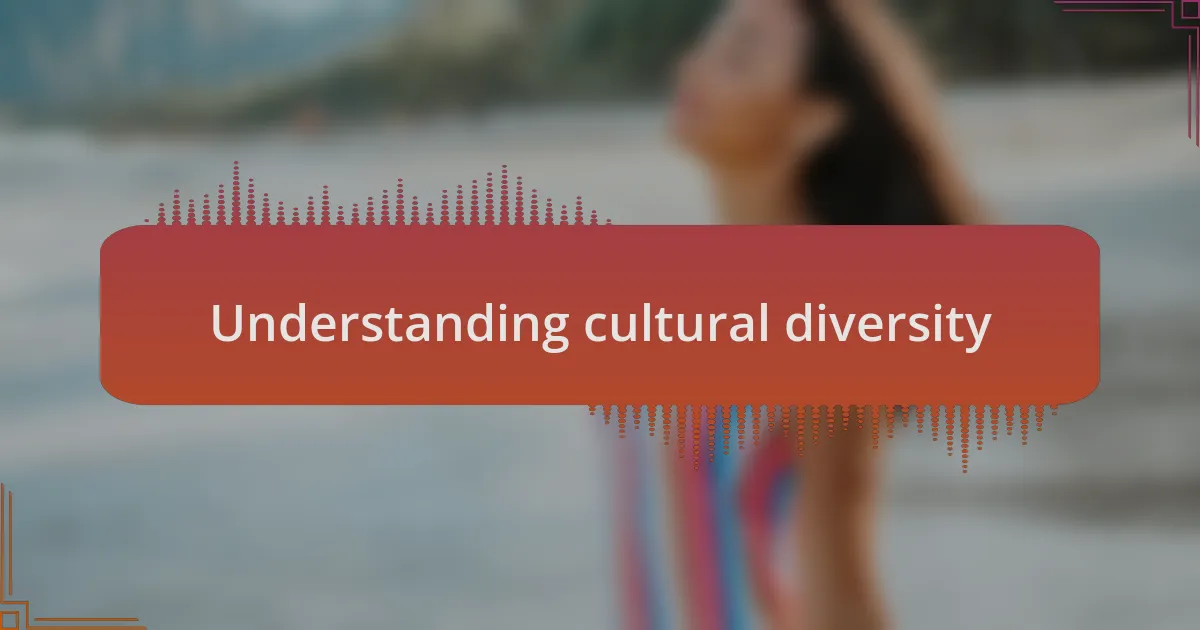
Understanding cultural diversity
Understanding cultural diversity is not just about recognizing differences; it’s about embracing them. I remember a trip to Jamaica, where I was struck by the vibrant tapestry of languages, foods, and traditions. It made me question: how often do we really take the time to appreciate what others bring to the table?
In my experience, every culture has a unique story worth listening to, and this understanding deepens our connections. For instance, while attending a local festival, the music and dance connected me to the community in a way that words never could. I found myself reflecting on the power of these shared experiences—how they foster empathy and appreciation among people from different backgrounds.
Moreover, understanding cultural diversity enriches our own lives, leading to personal growth. I’ve found that engaging with different cultures opens my mind to new ways of thinking. Have you ever tried a dish from another culture and realized it was life-changing? Those moments remind us that our world is full of extraordinary experiences waiting to be discovered.
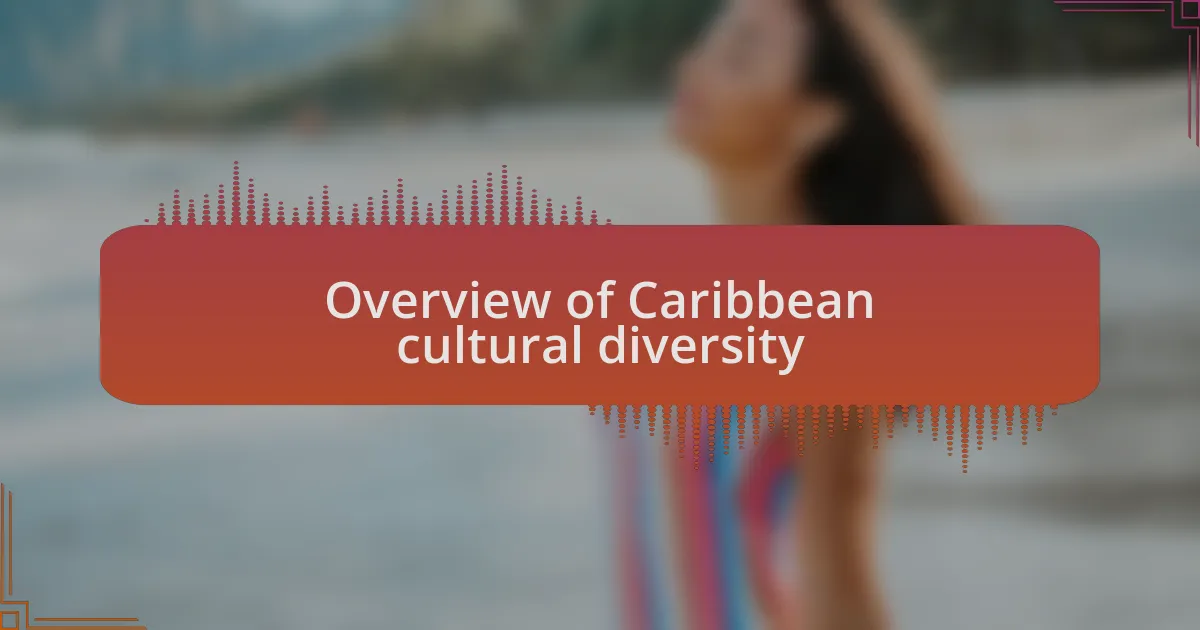
Overview of Caribbean cultural diversity
The Caribbean is a vibrant mosaic of cultures, born from a rich history of indigenous peoples, colonization, and immigration. Each island boasts unique customs, languages, and culinary traditions that reflect this blend. When I visited Trinidad, I was amazed by the sights and sounds of Carnival; the energy of the celebration was infectious, and it was a profound reminder of how cultural expressions can unite people in joyous revelry.
I vividly recall a culinary experience in Barbados where I tasted cou-cou and flying fish for the first time. Sitting at a local eatery, I was surrounded by families celebrating, each sharing stories laced with laughter and warmth. This meal wasn’t just food; it was a gateway into understanding the social fabric of the place. Have you ever had a meal that made you feel more connected to a culture? Those simple moments can transform our perception of diversity.
In addition to food and festivals, the languages spoken across the Caribbean contribute significantly to its cultural richness. I found it fascinating that Caribbean nations often blend English, Spanish, French, Dutch, and various Creole languages, creating a dynamic linguistic landscape. Speaking with locals in their native dialects fostered deeper connections and revealed nuances I would have otherwise missed. It makes you think: how often do we engage beyond surface-level interactions to truly understand someone’s perspective? This exploration into cultural diversity is endless, and each interaction leaves a lasting imprint on our hearts.
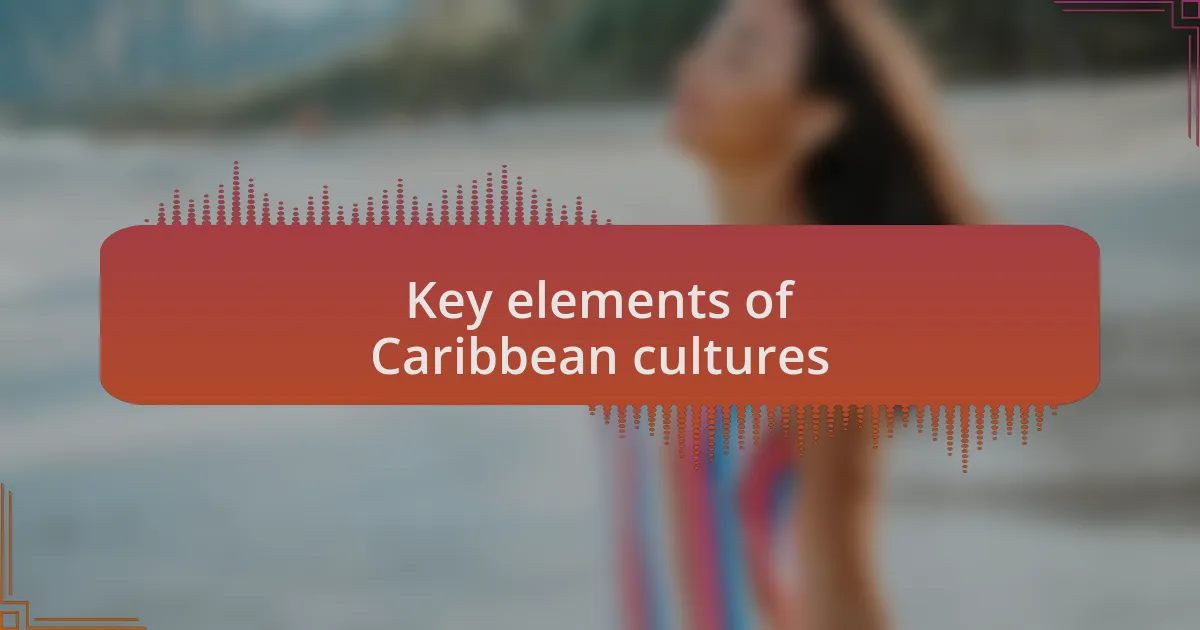
Key elements of Caribbean cultures
The Caribbean’s key cultural elements can often be witnessed in its vibrant music and dance. During my visit to Jamaica, I experienced the infectious rhythms of reggae and dancehall pulsating through the streets. It wasn’t just about the beat; it was about the stories behind each song, expressing a rich tapestry of struggles and joys. Can music really be a language of its own? Absolutely, as it transcends words, connecting people on a deeper emotional level.
Another crucial aspect is the deep-rooted artistic expression found in Caribbean literature and visual arts. At a local gallery in Saint Lucia, I was captivated by paintings that told tales of the islands’ histories and folklore. I couldn’t help but feel a sense of pride and connection to these narratives that highlighted the resilience of the Caribbean spirit. Have you ever been drawn in by a piece of art that spoke to you? That moment revealed how art embodies cultural identity, reflecting both the beauty and complexity of life in the Caribbean.
Moreover, spirituality plays a fundamental role in shaping Caribbean identities. I was fortunate enough to attend a local voodoo ceremony in Haiti, where I witnessed a complex blend of African traditions and Christian beliefs. The rituals were not just performances; they were profound expressions of faith and community. It left me pondering: how do our beliefs shape who we are? This experience showcased how spirituality binds people together, offering a sense of belonging and purpose within diverse Caribbean cultures.
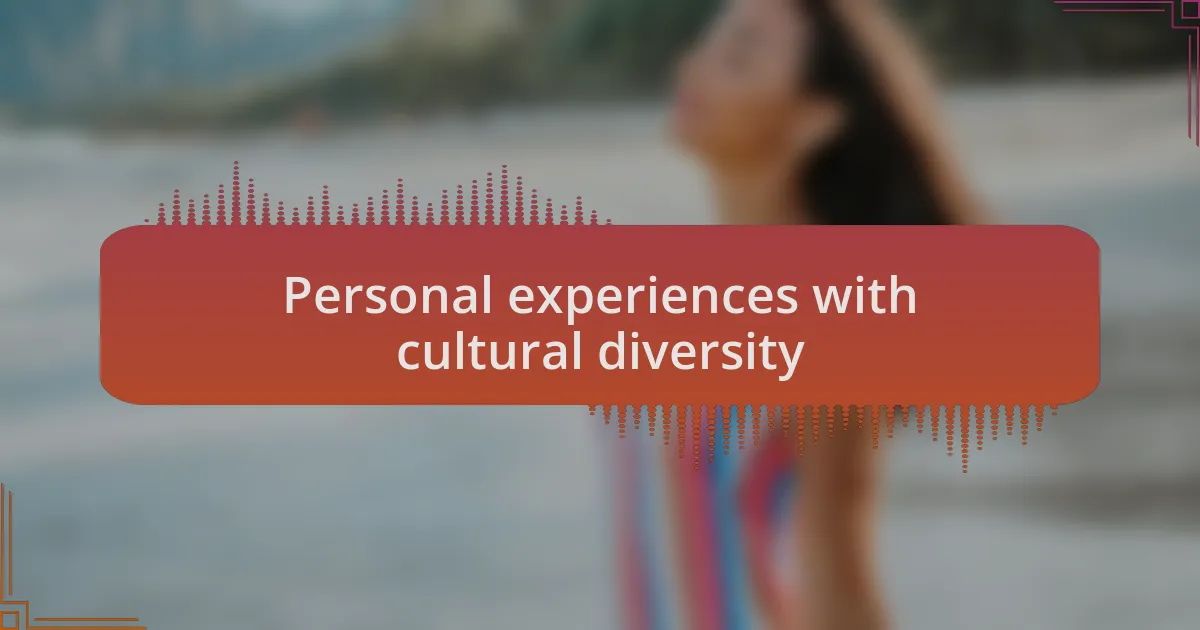
Personal experiences with cultural diversity
In another instance, while visiting Trinidad during Carnival season, I was swept up in the colorful parades and vibrant costumes. It was a whirlwind of expression and unity; people from all walks of life came together, celebrating in the streets. I found myself laughing and dancing alongside locals, feeling an exhilarating sense of freedom and joy—could there be a more powerful testament to cultural diversity than this shared experience of celebration?
One night in Cuba, I sat down with a local family to enjoy a home-cooked meal. As we dined, they shared stories of their ancestors, painting a picture of their rich heritage that intertwined with the flavors on our plates. I felt a profound connection to their history, realizing how food can serve as a bridge between cultures. Have you ever tasted something that transported you to another place? This meal reminded me of how culinary traditions reflect the diverse influences that shape Caribbean life.
While exploring the markets in Barbados, I encountered artisans proudly displaying their crafts, each piece telling a unique story influenced by different cultural backgrounds. I struck up conversations with several of them, learning how their art was not only a means of livelihood but also a way to preserve their heritage. I was struck by a simple truth: how often do we overlook the narratives behind everyday items? This experience deepened my appreciation for the cultural richness that exists within each handmade creation, showcasing the incredible tapestry of the Caribbean’s diverse societies.
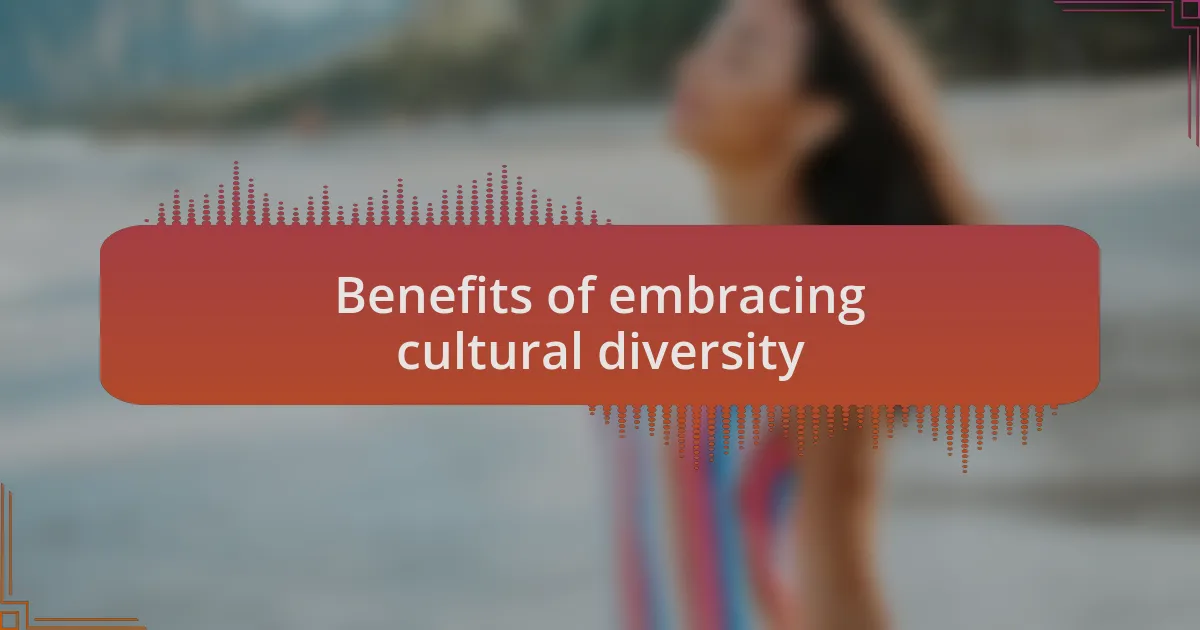
Benefits of embracing cultural diversity
Embracing cultural diversity can enrich our lives in countless ways, especially within the Caribbean context. I remember attending a workshop where individuals from various Caribbean backgrounds gathered to share traditional music and dance. The atmosphere was electric; each person contributed a piece of their culture, creating a beautiful mosaic of sounds and movement. It made me realize how these exchanges foster understanding and connection among people who might otherwise never cross paths.
In another instance, during a community festival in Jamaica, I witnessed the blending of culinary traditions firsthand. Different food stalls offered dishes from across the Caribbean, and I found myself sampling peppered shrimp while chatting with a vendor who narrated the origins of her family recipe. Isn’t it fascinating how food can be a doorway to someone’s culture? This experience deepened my appreciation for not just the flavors but also the stories that accompany each dish, emphasizing how cultural diversity can enhance our culinary experiences and forge new friendships.
Moreover, when I volunteered for a local environmental initiative in Dominica, I was struck by how perspectives from different cultural backgrounds informed our approach to the project. Team members shared unique insights about sustainable practices rooted in their traditional lifestyles, reminding me that embracing various viewpoints can lead to more innovative solutions. It begs the question: how might our own lives improve if we actively sought diverse perspectives in our daily interactions? This collaborative spirit demonstrated how cultural diversity fosters creativity and resilience, ultimately benefiting the entire community.